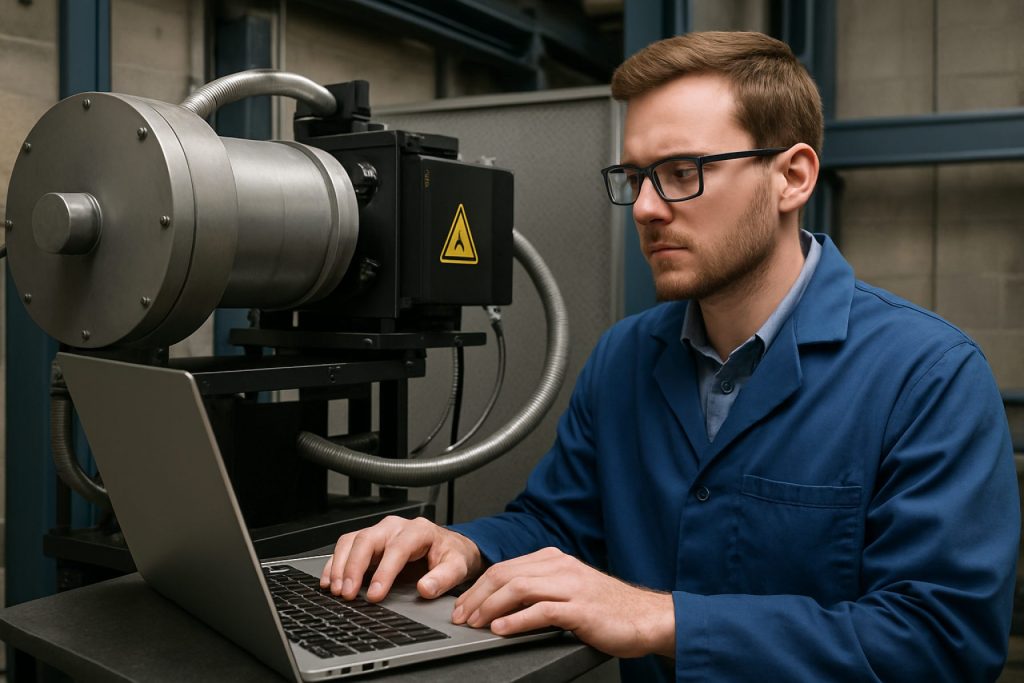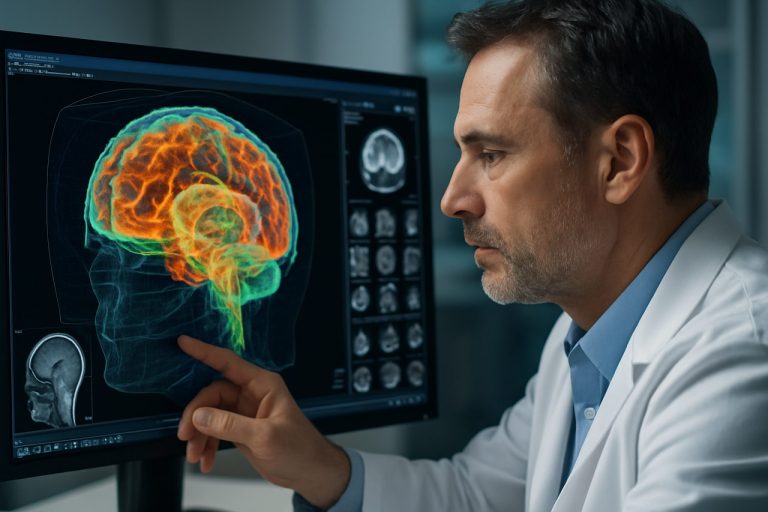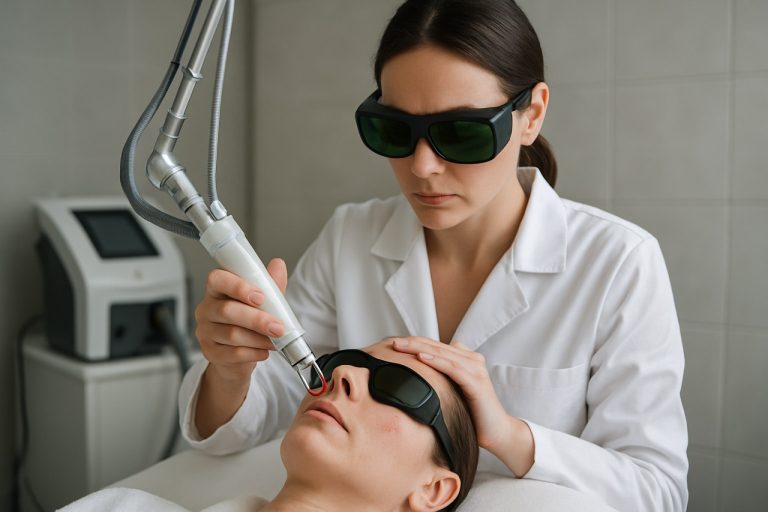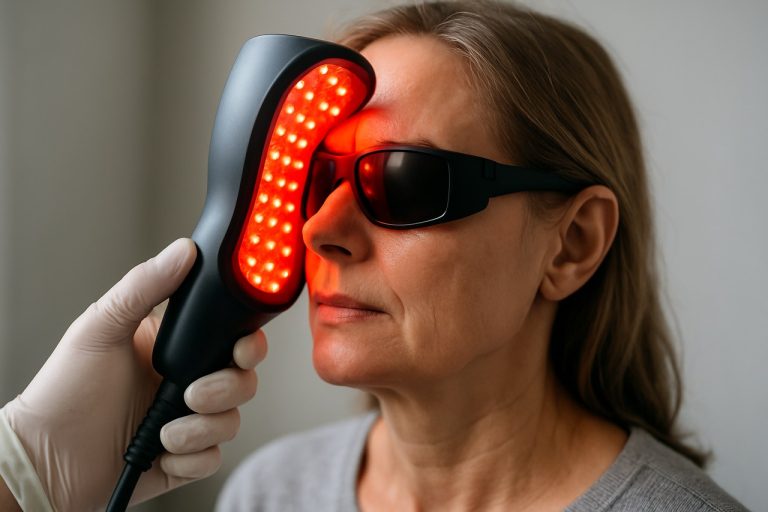
Unlocking the Future: How 2025 Will Redefine Neutron Imaging Equipment Calibration Services. Discover the Innovations and Market Trends Reshaping This Critical Industry.
- Executive Summary & Key Insights for 2025-2030
- Current Market Size and Forecast Growth (2025-2030)
- Technological Innovations in Neutron Imaging Calibration
- Key Industry Players and Official Partnerships
- Emerging Standards and Regulatory Developments
- Major End-Use Sectors: Applications and Demand Drivers
- Regional Market Analysis & Global Expansion Trends
- Challenges in Calibration Accuracy and Solutions
- The Role of Automation & Digitalization in Calibration Services
- Future Outlook: Opportunities and Strategic Recommendations
- Sources & References
Executive Summary & Key Insights for 2025-2030
The neutron imaging equipment calibration services market is poised for significant evolution between 2025 and 2030, driven by advancements in neutron imaging technologies, increasing adoption in industrial and research sectors, and tightening calibration standards. Neutron imaging—crucial for non-destructive testing (NDT) in industries such as aerospace, energy, automotive, and advanced manufacturing—relies on precise calibration to ensure measurement accuracy and regulatory compliance. As the global focus intensifies on high-reliability components and materials, the demand for accredited calibration services is expected to rise steadily.
Key players in the neutron imaging equipment and calibration sector include Thermo Fisher Scientific, known for its broad portfolio of analytical instruments, and AVE Labs, which provides specialized calibration and NDT solutions. Additionally, organizations such as the National Institute of Standards and Technology (NIST) and the International Atomic Energy Agency (IAEA) play pivotal roles by setting calibration standards and offering reference materials for neutron imaging laboratories worldwide.
Recent events highlight a growing emphasis on standardization and interoperability. In 2024, several collaborative initiatives among research reactors and calibration laboratories, such as those coordinated by the IAEA, have aimed to harmonize calibration protocols and improve the traceability of neutron imaging results. This trend is expected to accelerate, with more facilities seeking ISO/IEC 17025 accreditation and participating in interlaboratory comparison programs to demonstrate competence and ensure global acceptance of their data.
Technological advancements in neutron sources, detectors, and image processing software are prompting calibration service providers to continually update their methodologies. For instance, the adoption of solid-state neutron detectors and digital imaging platforms is necessitating new calibration procedures tailored to these modern systems. Companies like Toshiba Corporation and Hitachi, Ltd. are actively developing next-generation neutron imaging solutions, further driving the need for specialized calibration services.
Looking ahead, the outlook for 2025–2030 is characterized by increasing investment in neutron imaging infrastructure, particularly in Asia-Pacific and Europe, where governmental and private research initiatives are expanding. The calibration services sector is expected to benefit from these investments, with an emphasis on remote calibration capabilities and digital certification processes. As sustainability and safety regulations become more stringent, the role of precise neutron imaging calibration will become ever more central to quality assurance in critical industries.
Current Market Size and Forecast Growth (2025-2030)
The market for neutron imaging equipment calibration services is projected to experience notable expansion between 2025 and 2030, reflecting broader investments in non-destructive testing (NDT) and advanced imaging technologies. As industries such as aerospace, nuclear energy, and advanced manufacturing increasingly rely on neutron imaging for quality assurance and research, the demand for precise calibration of neutron imaging systems continues to rise.
Currently, the global neutron imaging equipment calibration services market is estimated to be valued in the low tens of millions USD, with primary activity concentrated in technologically advanced regions such as North America, Europe, and parts of East Asia. The key market participants are specialized calibration service providers, national laboratories, and equipment manufacturers offering calibration as part of their maintenance and support packages. Notably, organizations such as National Institute of Standards and Technology (NIST) in the United States and Paul Scherrer Institut in Switzerland offer both neutron imaging facilities and calibration services in compliance with international standards.
Growth projections for this sector are underpinned by several converging factors. First, regulatory pressures and industry standards are mandating more frequent and rigorous calibration of imaging equipment, especially where neutron imaging is used for safety-critical applications. Second, the proliferation of new neutron imaging installations, including commercial and research reactors, is expanding the addressable customer base. For example, major equipment manufacturers such as Toshiba Energy Systems & Solutions Corporation and General Atomics are supporting advanced neutron imaging capabilities in new facilities, which will require ongoing calibration support.
Between 2025 and 2030, the neutron imaging equipment calibration services market is forecast to grow at a compound annual growth rate (CAGR) of approximately 6–8%, based on current technology adoption rates and anticipated regulatory developments. Europe and the United States are expected to remain the largest regional markets, supported by robust research infrastructure and established industrial users, while growth in Asia-Pacific is anticipated to accelerate as new facilities come online and regional manufacturing sectors adopt advanced NDT protocols.
- Key drivers: Expanding neutron imaging installations, stricter regulatory requirements, increased adoption in aerospace and nuclear sectors.
- Key players: National Institute of Standards and Technology, Paul Scherrer Institut, Toshiba Energy Systems & Solutions Corporation, General Atomics.
- Outlook: Sustained market growth, driven by both technological advancement and compliance needs, with potential for new entrants as adoption broadens.
Technological Innovations in Neutron Imaging Calibration
Recent years have seen a significant evolution in neutron imaging equipment calibration services, driven by the need for higher precision and efficiency in both industrial and research applications. In 2025, ongoing innovations are focused on automation, digitalization, and enhanced traceability, with the aim of supporting increasingly stringent quality assurance standards in sectors such as aerospace, nuclear energy, and advanced manufacturing.
One of the most notable technological advancements is the integration of automated calibration systems. These systems leverage robotics and advanced sensor technology to perform routine calibration tasks, reducing human error and increasing throughput. Companies such as Anton Paar—a leader in precision measurement—have been at the forefront of implementing automated solutions into neutron imaging equipment services, enabling more consistent results and minimizing downtime.
Digital calibration certificates and blockchain-based traceability are also being adopted to ensure transparency and compliance across international borders. This digital shift allows for real-time verification of calibration status and history, crucial for industries with strict regulatory requirements. Organizations like Helmholtz Association in Germany are contributing to the digital transformation by facilitating collaborations between research facilities and industry partners to standardize and secure calibration data.
Another key trend is the use of advanced materials and reference standards specifically designed for neutron imaging calibration. These materials, produced with high isotopic purity, enable more accurate benchmarking of imaging systems. National Institute of Standards and Technology (NIST) remains a pivotal supplier of neutron calibration standards and reference materials, supporting both domestic and international calibration laboratories.
In parallel, remote and cloud-based calibration management platforms are emerging, allowing service providers and equipment owners to monitor calibration schedules, receive status alerts, and access documentation online. This development is especially relevant for distributed facilities or multinational operations, where centralized oversight is needed.
Looking ahead, the outlook for 2025 and the next few years includes continued integration of AI-driven diagnostics and predictive maintenance within calibration workflows. Such capabilities will further enhance the reliability and operational uptime of neutron imaging systems. As regulatory demands and performance expectations grow, we can anticipate more partnerships between equipment manufacturers, research institutes, and calibration service providers to drive innovation and harmonize best practices globally.
Key Industry Players and Official Partnerships
The neutron imaging equipment calibration services sector in 2025 features a select group of key industry players and official partnerships, reflecting the specialized nature and high technical requirements of neutron imaging. These services are critical for ensuring the accuracy and reliability of neutron imaging systems used in research, industrial quality control, and nuclear safety.
Leading the field are national laboratories and government-backed research institutes, which often possess the unique infrastructure required for neutron source generation and calibration. In the United States, Oak Ridge National Laboratory (ORNL) operates the High Flux Isotope Reactor (HFIR) and Spallation Neutron Source (SNS), both of which underpin advanced neutron imaging facilities and offer calibration services to industry and academia. Similarly, National Institute of Standards and Technology (NIST) in the US provides reference standards and calibration for neutron imaging, supporting a broad array of users from aerospace to automotive sectors.
In Europe, Paul Scherrer Institut (PSI) in Switzerland stands out with its SINQ neutron source, offering comprehensive imaging and calibration services. PSI frequently enters partnerships with equipment manufacturers and research consortia to advance calibration protocols and ensure international interoperability. The Institut Laue-Langevin (ILL) in France is another major calibration provider, with its high-flux reactor supporting both fundamental research and industrial applications.
On the equipment manufacturing side, companies like DECTRIS (Switzerland), known for neutron and X-ray detector technologies, collaborate with neutron source facilities to ensure their detectors meet stringent calibration requirements. Partnerships between equipment suppliers and calibration service providers are becoming more formalized, with joint research agreements and co-development of new calibration standards.
In Asia, Japan Atomic Energy Agency (JAEA) maintains neutron imaging calibration capabilities through its research reactors. The agency also engages in international standardization efforts, partnering with European and North American institutes for harmonized calibration services.
Industry associations such as the American National Standards Institute (ANSI) and the International Organization for Standardization (ISO) play crucial roles in developing and updating calibration standards, ensuring that service providers align with evolving global requirements. Looking ahead, increased formalization of cross-continental partnerships and digitalization of calibration records are expected to drive greater consistency and traceability in neutron imaging calibration services.
Emerging Standards and Regulatory Developments
The regulatory landscape surrounding neutron imaging equipment calibration services is experiencing significant evolution as increased adoption of neutron imaging technologies—across sectors such as aerospace, nuclear energy, and advanced manufacturing—drives heightened attention to precision and safety. In 2025, international and national standards organizations are accelerating efforts to harmonize calibration protocols and certification requirements, reflecting both technological advances and growing cross-border collaboration in research and industry.
A key development is the continued refinement of standards overseen by the International Organization for Standardization (ISO), particularly ISO 19232 for non-destructive testing and radiographic examination, which includes guidelines for neutron radiography. Updates in 2025 are focusing on traceability of calibration, improved uncertainty analysis, and the integration of digital imaging advancements. Leading neutron research facilities such as those operated by Oak Ridge National Laboratory and Paul Scherrer Institut contribute technical expertise to these standardization efforts, influencing calibration benchmarks and best practices.
Regulatory bodies in the United States, notably the National Institute of Standards and Technology (NIST), are playing a pivotal role by updating reference materials, calibration services, and guidance for neutron imaging systems. In 2025, NIST’s neutron calibration laboratories are expanding their service offerings to accommodate new detector technologies and higher throughput demands. This expansion is anticipated to set benchmarks for laboratory accreditation and to support compliance with both domestic and international standards.
Within the European Union, the European Association of National Metrology Institutes (EURAMET) is coordinating harmonization projects to align neutron imaging calibration approaches between member states, supporting mutual recognition of calibration certificates and facilitating cross-border equipment servicing. These efforts are particularly relevant as the EU pushes for digitalization and standardization in quality infrastructure.
- Calibration service providers are increasingly required to demonstrate ISO/IEC 17025 accreditation, with audits focusing on traceability to primary standards and robust documentation of calibration procedures.
- Manufacturers such as General Atomics and Hitachi are working with standards bodies to ensure that their neutron imaging systems integrate features that facilitate periodic and automated calibration.
- Regulatory outlook points to stricter enforcement of calibration intervals and record-keeping, especially in industries where neutron imaging results are critical for safety assurance.
Looking forward, stakeholders expect the regulatory focus to intensify on cybersecurity and remote calibration protocols, responding to the growing prevalence of networked and AI-enhanced neutron imaging equipment. As the sector matures, the interplay between evolving standards, regulatory compliance, and rapid technological innovation will remain a defining feature of the neutron imaging calibration services landscape.
Major End-Use Sectors: Applications and Demand Drivers
Neutron imaging equipment calibration services are increasingly integral to various high-value sectors where precise material characterization and non-destructive evaluation are critical. As of 2025, major end-use sectors include nuclear energy, aerospace, defense, automotive, advanced manufacturing, and research institutions. Each sector presents distinct application needs and demand drivers, shaping the landscape for calibration service providers.
In the nuclear energy sector, regular calibration of neutron imaging systems is mandated to ensure operational safety and regulatory compliance. As nuclear facilities continue to age and new reactors come online in regions like Asia and Europe, demand for rigorous calibration services is expected to remain robust. Utilities and reactor operators rely on accurate neutron imaging to assess fuel assemblies, detect corrosion, and verify the integrity of reactor components. Leading nuclear technology companies and reactor operators such as Westinghouse Electric Company emphasize the importance of precision neutron imaging and calibration to minimize risk and optimize performance.
The aerospace and defense industries are notable for their adoption of neutron imaging for detecting hidden flaws in lightweight metal alloys and composite structures. Precision calibration of imaging equipment is essential for meeting stringent safety and quality standards. Aircraft manufacturers and defense contractors, including Boeing and Airbus, have invested in advanced non-destructive testing (NDT) technologies, driving sustained demand for calibration services to support manufacturing and maintenance operations.
In automotive engineering, neutron imaging serves as a complementary NDT method alongside X-ray and ultrasound for inspecting complex engine components and fuel cells. As the sector shifts toward electric vehicles and hydrogen fuel systems, calibration services for neutron imaging equipment are increasingly sought after to ensure the reliability and safety of next-generation propulsion systems. Major automotive manufacturers and suppliers, such as Bosch, are expanding their internal and partner-led NDT capabilities.
Research institutions and national laboratories remain major end-users, leveraging neutron imaging for advanced materials science, energy storage research, and cultural heritage studies. Facilities such as national neutron sources and user centers require regular calibration for their sophisticated imaging instruments. Organizations like Oak Ridge National Laboratory and Paul Scherrer Institute operate large-scale neutron imaging facilities, anchoring demand for specialized calibration service providers.
Looking ahead, ongoing technological advances, greater emphasis on regulatory compliance, and the proliferation of neutron imaging capabilities in emerging markets are set to further drive demand for calibration services. Service providers able to address sector-specific requirements and evolving standards will be best positioned to capture growth across these end-use segments in the coming years.
Regional Market Analysis & Global Expansion Trends
The global landscape for neutron imaging equipment calibration services in 2025 is marked by both regional specialization and increasing cross-border collaboration. Calibration services are vital for ensuring the accuracy and reliability of neutron imaging systems, which are used in sectors such as aerospace, automotive, nuclear power, and advanced materials research. The market is primarily driven by the proliferation of new neutron imaging facilities and the modernization of existing centers, particularly in North America, Europe, and Asia-Pacific.
In North America, the United States remains a leader due to its concentration of national laboratories and research reactors, such as those operated by Oak Ridge National Laboratory and Argonne National Laboratory. These institutions not only conduct neutron imaging research but also offer calibration services to external users, supporting both regional and international stakeholders. The growing demand from aerospace and automotive industries—keen on non-destructive testing capabilities—has led to a steady increase in calibration service contracts in this region.
Europe is characterized by a dense network of neutron imaging facilities and a collaborative approach. Organizations such as the Paul Scherrer Institute in Switzerland and Institut Laue-Langevin in France are prominent providers of neutron imaging and calibration expertise. The European market benefits from harmonized standards and inter-laboratory comparisons, coordinated through bodies like EURAMET (European Association of National Metrology Institutes), which are expected to further streamline calibration protocols through 2025 and beyond.
Asia-Pacific is experiencing rapid growth, with significant investment from countries such as China and Japan. Institutions like Japan Atomic Energy Agency and the Institute of High Energy Physics in China are expanding their neutron imaging capabilities and ramping up calibration service offerings in response to increased industrial demand. Regional governments are promoting the localization of calibration standards, which is expected to reduce turnaround times and cost for domestic industries.
Globally, the market is witnessing the entry of specialized equipment manufacturers, such as RI Research Instruments (Germany) and DECTRIS (Switzerland), who are partnering with research institutions to provide integrated calibration solutions. As digitalization and automation advance, remote calibration and monitoring services are anticipated to gain traction, further supporting international expansion and harmonization of calibration practices. Over the next few years, the sector is expected to see continued global expansion, especially as new neutron sources come online and demand from emerging economies increases.
Challenges in Calibration Accuracy and Solutions
The field of neutron imaging equipment calibration services faces several challenges in ensuring precise and reliable calibration results, particularly as demand for high-resolution, quantitative neutron imaging grows in sectors like aerospace, energy, and advanced manufacturing. One of the primary technical challenges is the inherent sensitivity of neutron detectors and imaging systems to environmental conditions such as background radiation, temperature, and humidity, all of which can introduce measurement drift and systematic errors. Furthermore, the lack of universally accepted calibration standards for neutron imaging, unlike those established for X-ray or gamma-ray equipment, complicates inter-laboratory comparison and traceability of results.
A related challenge is the scarcity of accredited calibration facilities equipped with reference neutron sources and advanced phantoms to simulate varied imaging scenarios. Only a handful of institutions globally, such as National Institute of Standards and Technology (NIST) in the US and Paul Scherrer Institute in Switzerland, can provide primary reference calibration, making routine calibration for commercial and research users logistically complex and costly. The limited availability of specialized calibration technicians further compounds the issue, as neutron imaging requires expertise distinct from more common radiographic techniques.
To address these challenges, leading neutron imaging equipment manufacturers such as DECTRIS and Thermo Fisher Scientific are investing in automated calibration solutions that leverage real-time monitoring, artificial intelligence-based drift correction, and remote diagnostics. These innovations aim to reduce the frequency and downtime associated with manual calibration cycles. Meanwhile, research organizations are collaborating under international frameworks—such as those coordinated by the International Atomic Energy Agency (IAEA)—to develop reference materials and protocols for neutron imaging calibration, with several round-robin exercises and intercomparison campaigns planned for 2025 and beyond.
Looking ahead, the increased deployment of compact accelerator-driven neutron sources and advancements in digital detector technology are expected to drive demand for more accessible, standardized calibration services. The anticipated introduction of portable calibration kits and cloud-based calibration data management platforms by providers like Mirion Technologies could further democratize access to high-quality calibration. However, ongoing vigilance will be needed to ensure that rapid technological progress does not outpace the establishment of robust calibration standards and training for personnel, a concern echoed by the OECD Nuclear Energy Agency in recent technical forums.
The Role of Automation & Digitalization in Calibration Services
The integration of automation and digitalization into neutron imaging equipment calibration services is transforming the sector’s operational standards, efficiency, and reliability. As the demand for high-precision non-destructive testing grows across industries such as aerospace, energy, and advanced manufacturing, the calibration of neutron imaging systems faces mounting requirements for both accuracy and traceability. Between 2025 and the subsequent few years, these technological advancements are anticipated to redefine industry best practices and regulatory compliance.
Automation in calibration services is primarily streamlining complex, repetitive tasks, minimizing human error, and enabling faster turnaround times. For neutron imaging—where calibration involves intricate alignment and verification of detector response, beam intensity, and spatial accuracy—automated systems are increasingly being deployed. Leading neutron facility operators and equipment manufacturers are integrating robotic sample handling, computer-controlled positioning systems, and real-time data acquisition platforms. For instance, global leaders such as Thermo Fisher Scientific and Oxford Instruments are advancing their neutron-related offerings with enhanced automation in their calibration protocols, ensuring reproducibility and consistent documentation.
Digitalization further supports automation by providing robust data management, analytics, and remote access capabilities. Digital calibration logs, cloud-based documentation, and AI-driven analytics allow for predictive maintenance and continuous improvement in calibration accuracy. Facilities such as the Paul Scherrer Institute and National Institute of Standards and Technology (NIST) are actively developing and adopting digital platforms for managing calibration data, traceability chains, and compliance documentation in neutron imaging. These systems are designed to meet rigorous international standards, including ISO 17025, facilitating global interoperability and audit-readiness.
- Automated calibration routines significantly reduce downtime and labor, especially in high-throughput research environments.
- Digital twins and simulation tools are being explored for virtual calibration, enabling pre-emptive troubleshooting and optimization before physical intervention.
- Remote calibration and diagnostics, enabled by secure digital infrastructures, are expanding service accessibility, particularly for geographically dispersed facilities.
Looking ahead to 2025 and beyond, the convergence of automation and digitalization is expected to be vital for meeting the evolving technical and regulatory requirements in neutron imaging. Equipment suppliers and calibration service providers are likely to invest further in these technologies to ensure high reliability, traceability, and scalability. As these trends continue, partnerships between technology developers, instrumentation firms, and research institutes will be crucial in shaping the next generation of neutron imaging calibration services.
Future Outlook: Opportunities and Strategic Recommendations
The outlook for neutron imaging equipment calibration services in 2025 and the coming years is shaped by accelerating adoption of advanced imaging modalities in industries such as aerospace, energy, nuclear research, and materials science. As neutron imaging becomes increasingly critical for non-destructive testing (NDT) and quality assurance, the demand for precise, standards-compliant calibration services is expected to intensify.
Key opportunities are emerging from ongoing investments in research reactors and neutron sources, particularly in Europe, North America, and Asia-Pacific. Facilities like the European Spallation Source (ESS) and upgrades at institutes such as the Paul Scherrer Institute are expanding neutron imaging capabilities, driving the need for specialized calibration support. In the United States, the Oak Ridge National Laboratory is advancing neutron imaging infrastructure, with calibration services playing an essential role in maintaining measurement accuracy and equipment reliability.
Strategically, calibration service providers are encouraged to focus on the following areas:
- Standards Development: Collaboration with industry bodies and metrology institutes, such as Physikalisch-Technische Bundesanstalt (PTB), will be crucial to harmonize calibration protocols and ensure global interoperability.
- Digitalization and Automation: Integrating digital calibration records, remote diagnostics, and automated calibration routines can improve throughput and traceability. Companies like Irradiation Services are beginning to adopt digital management for quality systems.
- Customized Solutions: As neutron imaging systems diversify—from high-flux research instruments to compact, industrial units—calibration providers will need to offer tailored services, including on-site calibration and support for novel detector technologies.
- Training and Accreditation: Investment in operator training and laboratory accreditation (e.g., ISO/IEC 17025) will be increasingly valued by clients seeking compliance and high confidence in measurement results. Organizations like National Institute of Standards and Technology (NIST) set benchmarks in this field.
Looking forward, strategic partnerships with equipment manufacturers—such as D-Tek and RIKEN—can enable bundled service offerings and lifecycle support. Additionally, emerging applications in battery research, additive manufacturing, and cultural heritage conservation are expected to broaden the customer base for calibration services. Overall, the sector is poised for steady growth as neutron imaging cements its role in critical inspection and research workflows worldwide.
Sources & References
- Thermo Fisher Scientific
- AVE Labs
- National Institute of Standards and Technology (NIST)
- International Atomic Energy Agency (IAEA)
- Toshiba Corporation
- Hitachi, Ltd.
- Paul Scherrer Institut
- General Atomics
- Anton Paar
- Helmholtz Association
- Oak Ridge National Laboratory
- National Institute of Standards and Technology
- Paul Scherrer Institut
- DECTRIS
- American National Standards Institute
- International Organization for Standardization
- International Organization for Standardization (ISO)
- Oak Ridge National Laboratory
- European Association of National Metrology Institutes
- Westinghouse Electric Company
- Boeing
- Airbus
- Bosch
- Institut Laue-Langevin
- Japan Atomic Energy Agency
- Institute of High Energy Physics
- DECTRIS
- Mirion Technologies
- OECD Nuclear Energy Agency
- Oxford Instruments
- Physikalisch-Technische Bundesanstalt (PTB)



